# 39 The Magic and Grit of Frida Kahlo
On La Casa Azul and its transformative power, Mexico City
One of my favorite small museums in the world is the Frida Kahlo Museum in Coyoacán, a lively neighborhood in Mexico City. If you’re a Frida Kahlo fan like I am, it’s worth traveling to CDMX (Ciudad de Mexico) for this museum alone.
Daniel and I visited the place in 2022, when we lived on Avenida Amsterdam for a month, and I vividly remember how much it moved me to be in her home, her presence.
Because this essay contains many photos, your email program may cut it short. Please click on "view entire message" to read the full version in your program or read the post online through the links in the head and bottom of this email.
La Casa Azul
The Frida Kahlo Museum is housed in La Casa Azul—The Blue House—where Frida Kahlo worked and lived for most of her life. First with her parents and later with the muralist Diego Rivera. On her request, he turned the wonderful house into a museum after her death in 1954.
The intense cobalt blue color of the walls symbolizes Kahlo’s Mexican identity and creativity.
Chronic Pain
Although I’ve been an admirer of Kahlo’s art for a while, I knew little about her life. The poignant exhibit in La Casa Azul made me see her body of work from an entirely new perspective: It made me see her broken body, and how she had continued to create art despite of or as a result of her physical disabilities.
Frida Kahlo suffered major injuries from a bus accident in 1925, when she was only eighteen. The injuries left her with chronic pain for the rest of her life. She was forced to give up her dream of becoming a doctor and chose to become an artist instead.
Her trauma not only found a way into her art, but also into her studio and extravagant wardrobe. Her style showed her strong personality and origin—she was proud of being Mexican and liked wearing traditional garments. Yet her layered clothes also meant to conceal her uneven gait and the medical corsets she wore underneath.
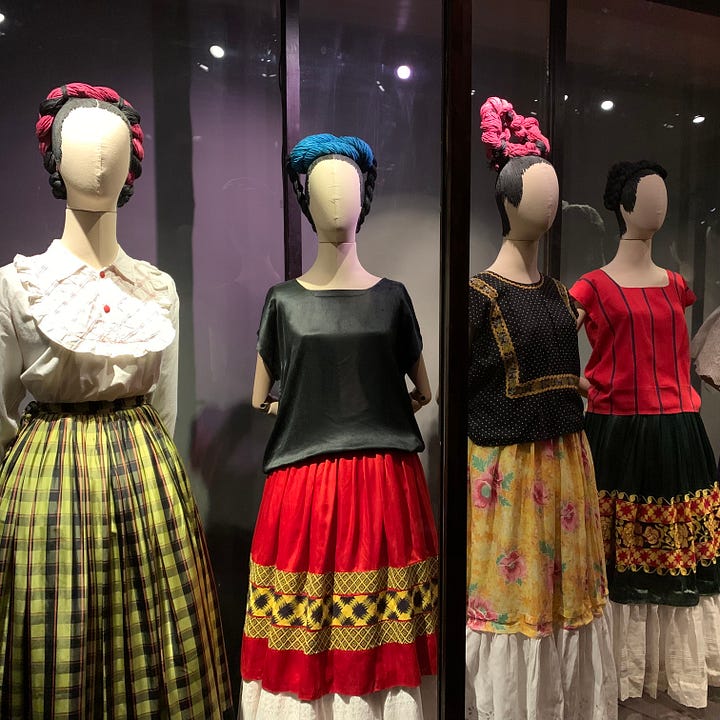
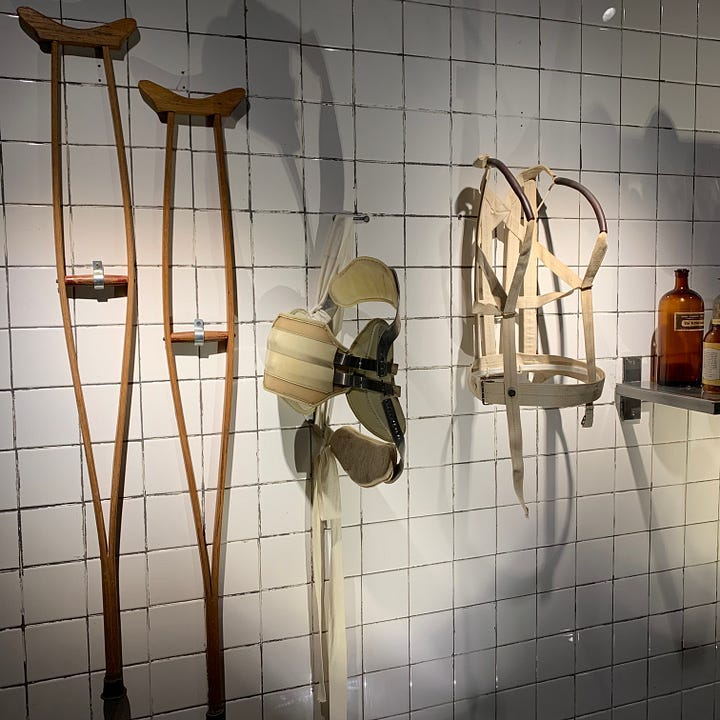
Self-Reflection
It took many years for the young Frida Kahlo to recuperate from the bus accident. To avoid her from getting too bored, her mother installed a mirror under the canopy of her bed, so she would always have something interesting to look at while lying on her back. Even after she healed, Kahlo never removed the mirror. In the years to come, she would often go through periods in which she could barely leave the bed.
As I stood in her room in the museum, I wondered whether the mirror explained why Kahlo had become so good at painting self-portraits. I imagined that seeing your own image reflected so regularly might give you some special insights into how emotions display themselves on a face.
On the bed now rests Frida Kahlo’s death mask. (See the first photo in this post.)
Noguchi’s Butterflies
Among Frida Kahlo’s many artist friends was Isamu Noguchi. When Kahlo went through a period of bedrest, he gifted her a collection of mounted butterflies. She fixed them under the canopy of a second bed for the same reason her mother had installed the mirror: So she would always have something interesting to look at.
After Patti Smith, the American singer-songwriter, visited La Casa Azul, she wrote a poem about Frida Kahlo and her butterflies that hangs printed on the museum’s wall.
Noguchi’s Butterflies
I can not walk
I can not see
Further than what
Is in front of me
I lay on my back
yet I do not cry
Transported in space by the butterflies.
Above my bed
Another sky
With the wings you sent
Within my sight
All pain dissolves
In another light
Transported thru
Time
By the butterfly
This little song
Came to me
Like a little gift as I stood
Beside the bed of Frida.
I give it to you with much love,
—Patti Smith
The Rooms
The house contains original furniture and artwork. Kahlo and Riviera collected Mesoamerican artifacts, folk crafts, and political memorabilia, such as images of Lenin, Marx, and Trotsky. Kahlo’s personal belongings are preserved as well: her prosthetic leg, hair brushes, easel, wheelchair, and art materials.
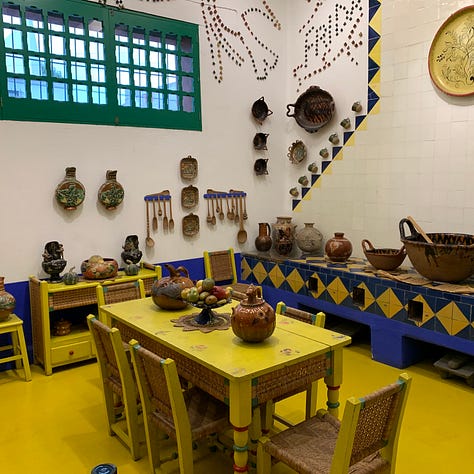
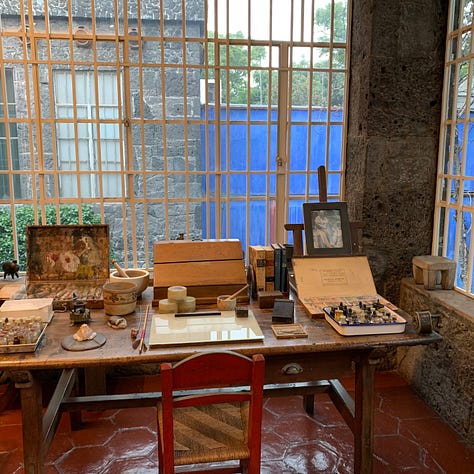
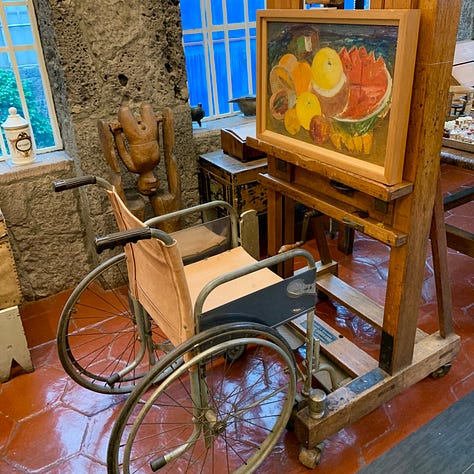
Her Ashes
Near the end of my visit, I had an unexpected and moving encounter: Suddenly, Kahlo and I were very close. On the photograph below you can see us together, her ashes and me, or more precisely, my masked reflection in the mirror behind the urn holding her ashes.
Frida Kahlo’s Paintings
The Frida Kahlo Museum is, strangely, not rich in original artworks. Most of the paintings created in La Casa Azul are exhibited in museums around the world. But there are some excellent early works present, and several self-portraits expressing her physical suffering and the power doctors had over her body. There’s also a moving portrait of her father, and the last thing Kahlo painted before her death, the water melon slices that were meant to celebrate life.
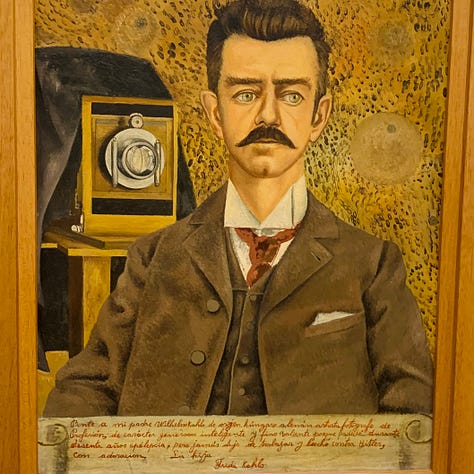
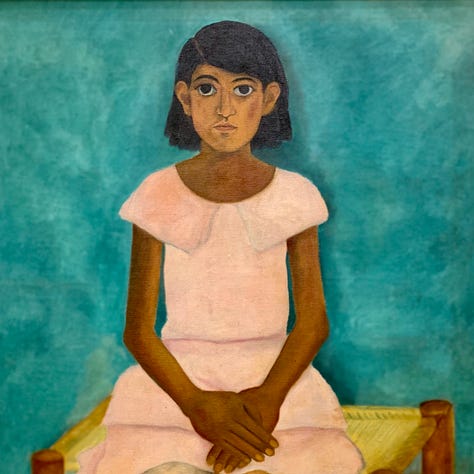
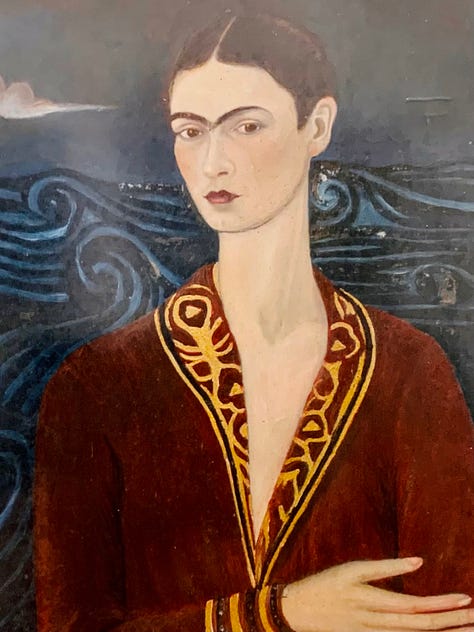
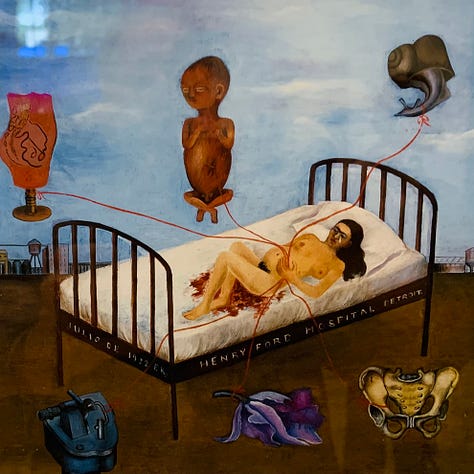
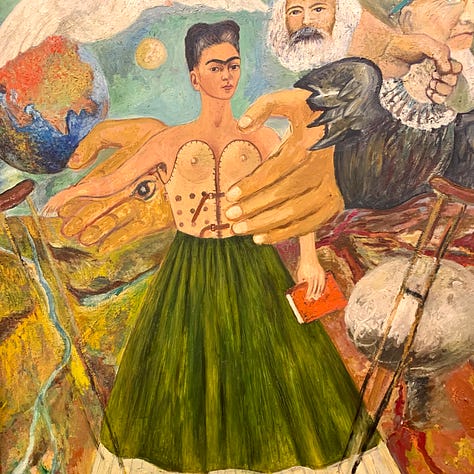
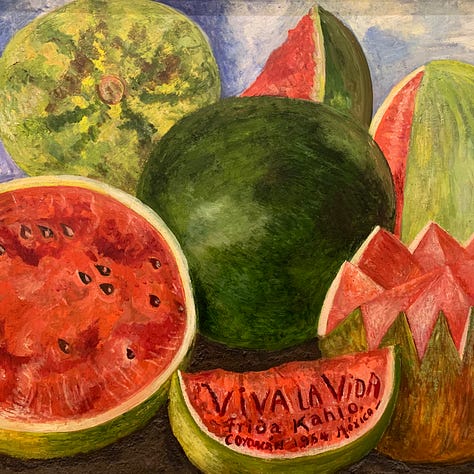
Inspiration, Transformation
Frida Kahlo is an inspiration to many women in the world—myself included. Walking around in La Casa Azul, in the very place where she lived and worked, made me feel stronger.
I asked Daniel to take my picture in the garden, among the native Mexican plants and pre-Columbian sculptures. I was curious whether my feelings were visible from the outside, and I think they are.
I’m not a force like she was, but under her influence, I transformed into a more confident, less apologetic woman.
Please visit the museum website for the most up to date practical information.
Bonus: Frida Kahlo Elsewhere
In the Museo de Arte Moderno in another neighborhood of Mexico City, I stared at the painting below for a long time. It’s called The Two Fridas. If you zoom in on the hand resting on her green dress, you can see Frida holding a childhood portrait of Diego.
Desk Journeys aka Reading Recommendations
I recently finished You Dreamed of Empires by Álvaro Enrigue, translated by Natasha Wimmer (Riverhead Books, 2024).
Imagine entering Montezuma’s court in 1519. Imagine being Cortés or a translator or Montezuma or a priest or Montezuma’s sister. Imagine the walls have ears and you’re not entirely sure of what you’re seeing. Imagine meeting a horse for the very first time or getting lost in a maze. Imagine you cannot tell whether the person in front of you solicits your company or your death.
In this engrossing historical novel, you really get to feel what it must have been like for the people who would determine the history of Mexico for ages to come. A great read!
You Dreamed of Empires by Álvaro Enrigue.
Related Posts
If you enjoyed this post, you might also be interested in reading:
Time to Say Goodbye
Life in San Miguel de Allende has been hot, dry, and dusty. I never thought I would be looking forward to the rains, which are predicted to start this week. I’m working on an advanced draft of a novel that I hope to finish in June, am researching our upcoming trip to Peru (tickets to Machu Picchu are booked!), and am doing some promotional work for my upcoming collection of flash fiction, Woman of the Hour. The first reviews are already coming in on Goodreads and are making me very happy.
All my best,
Claire
P.S. What does Frida Kahlo mean to you? Has her art (or life) transformed you?


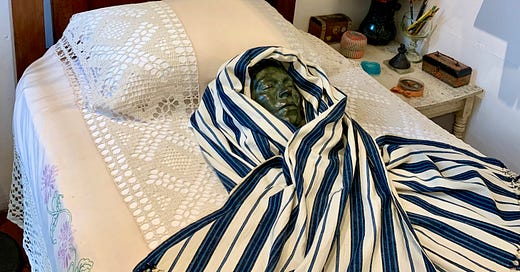



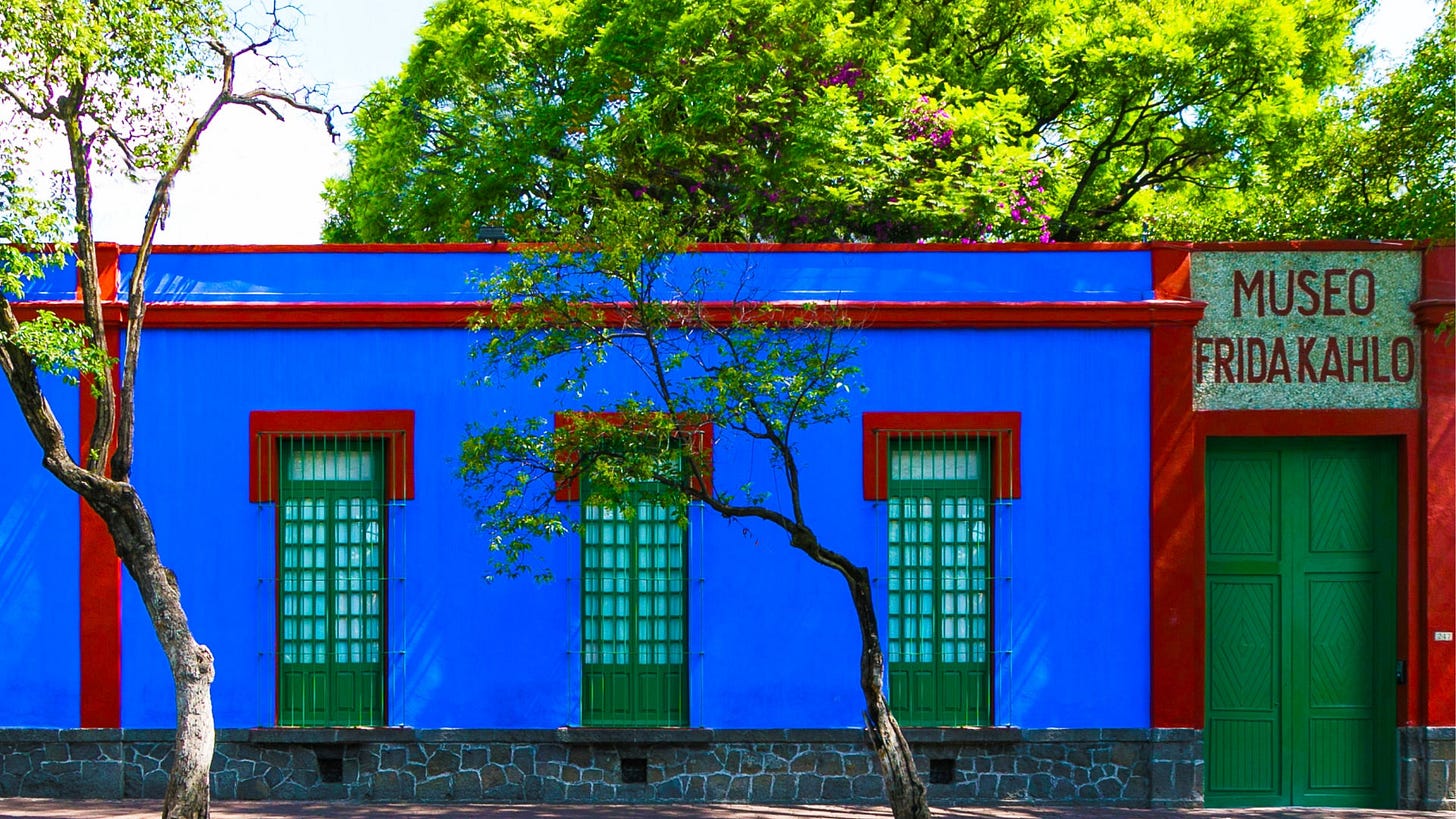
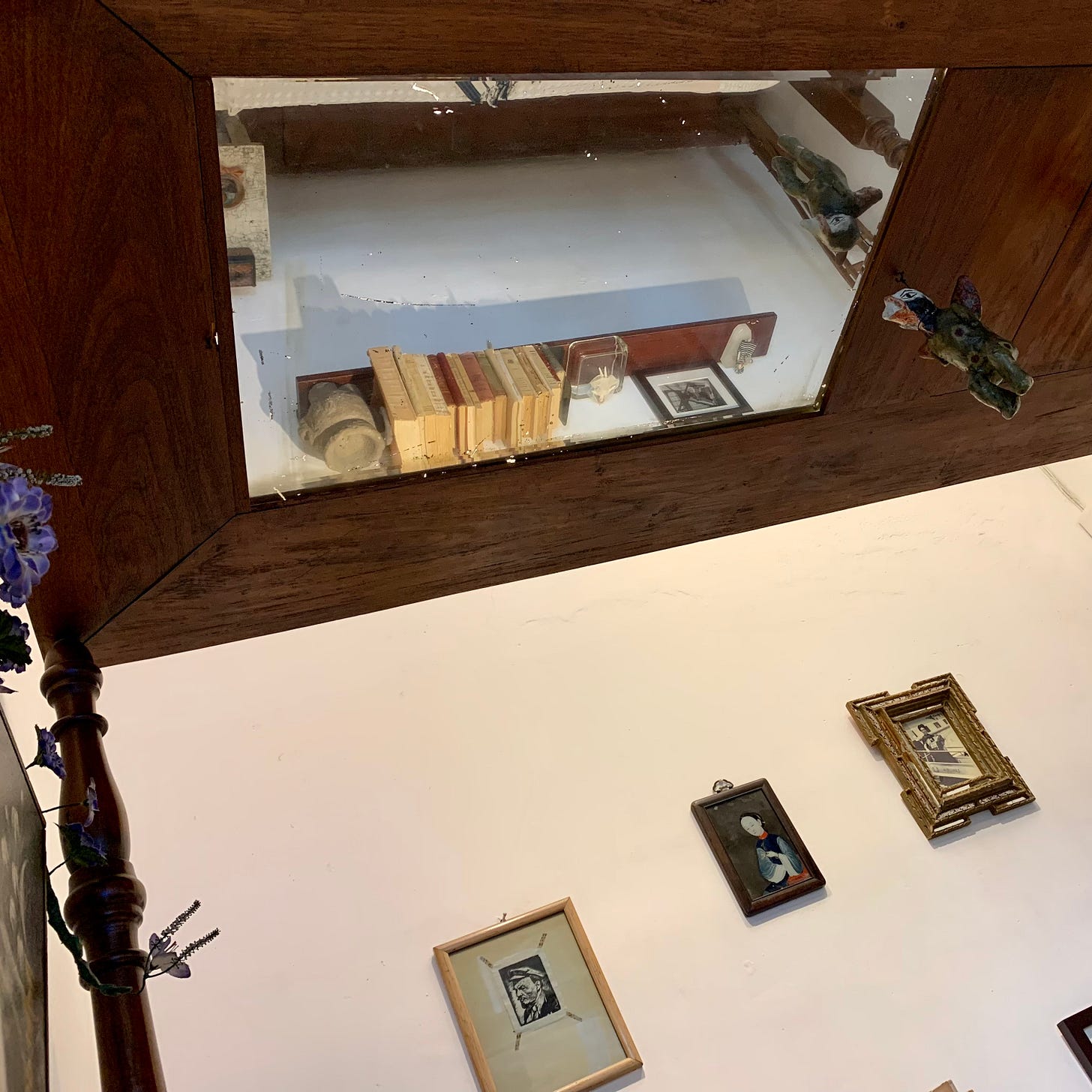
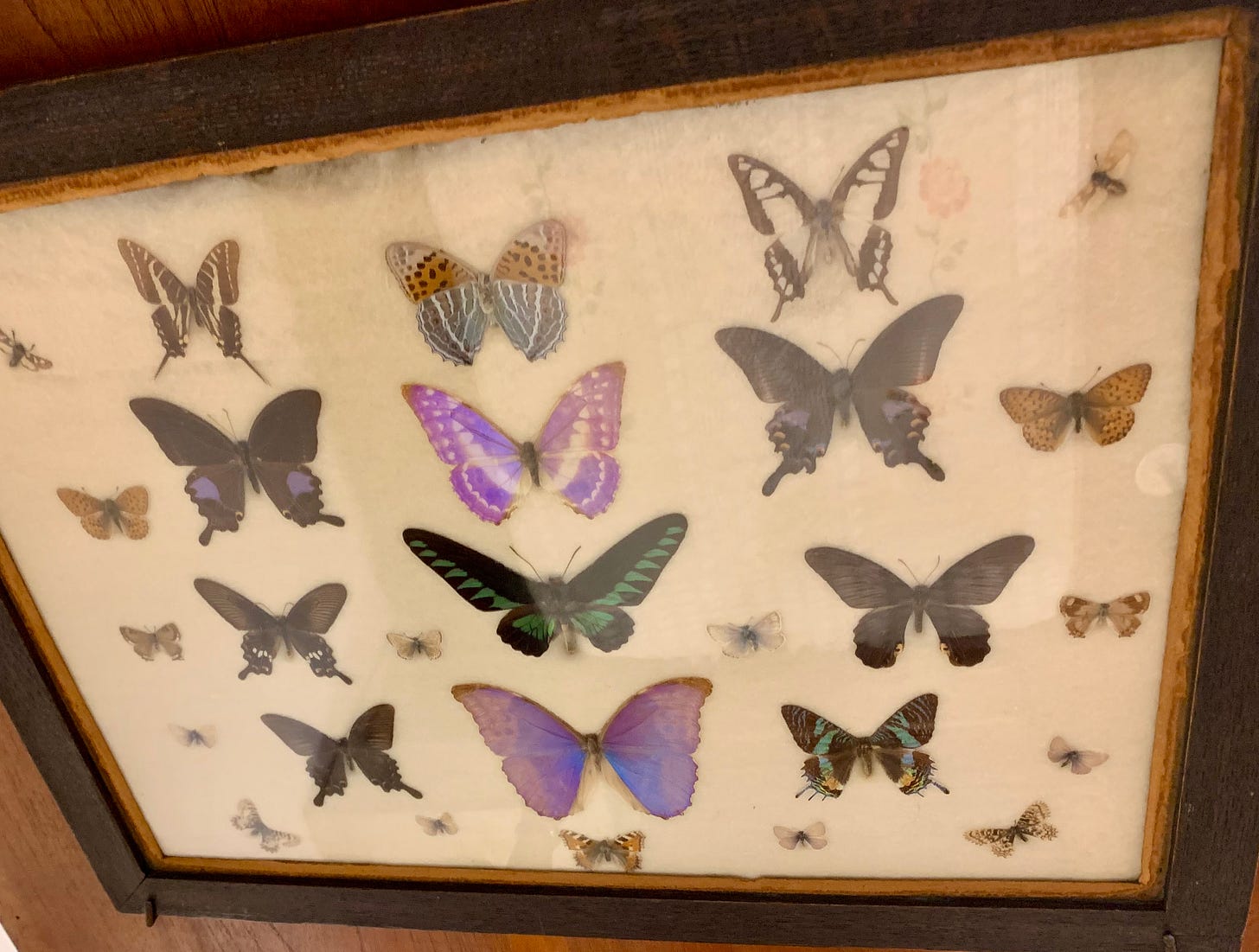

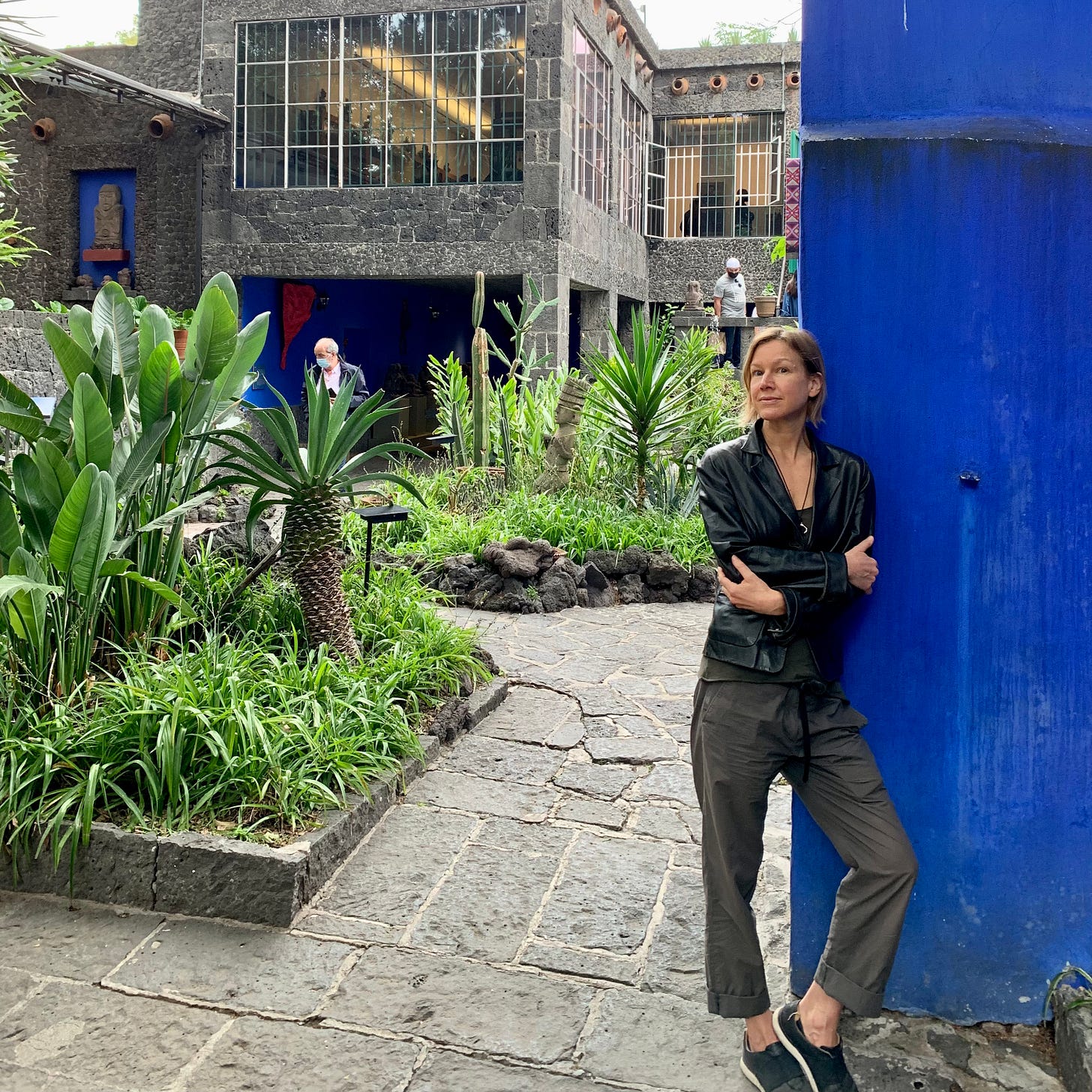
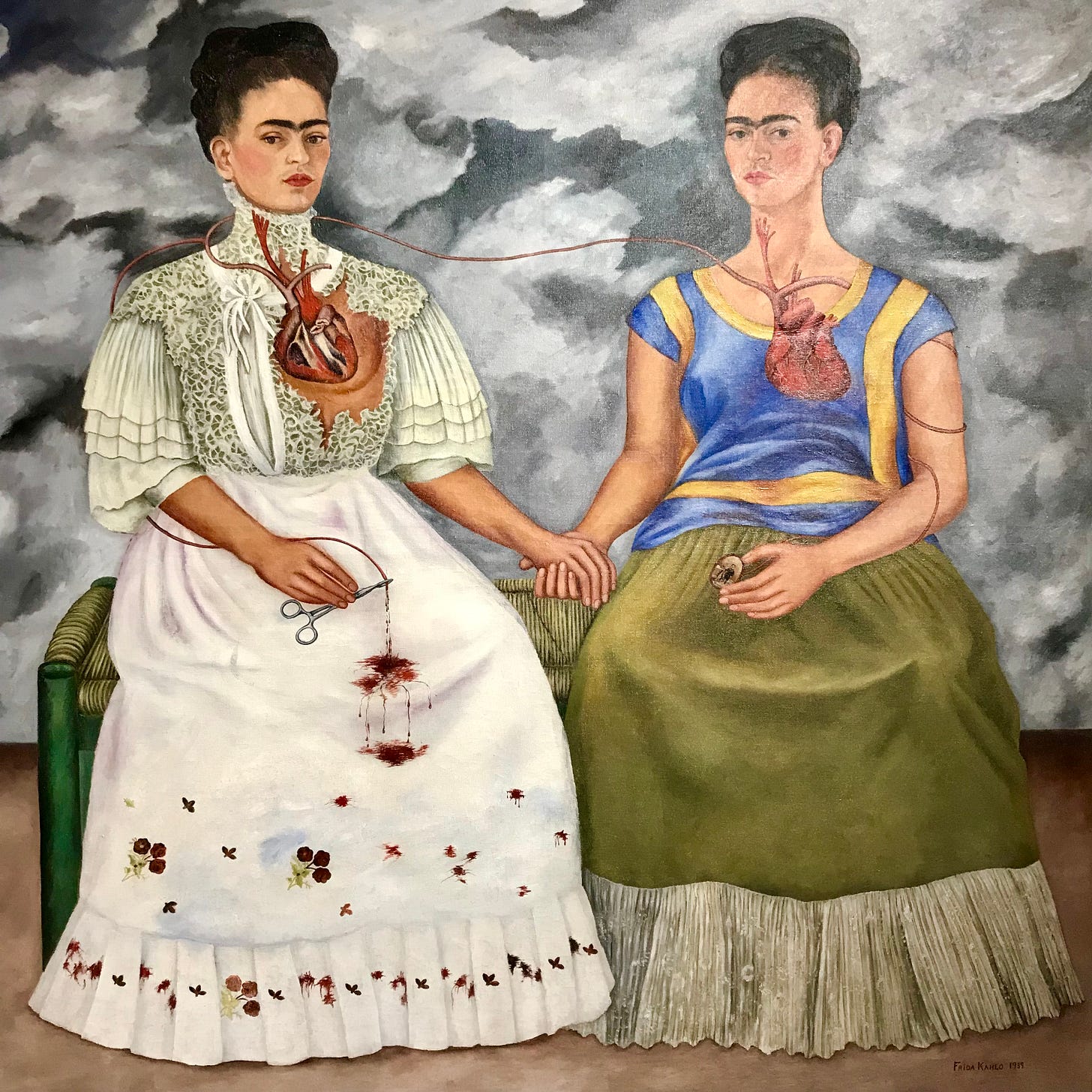
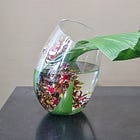
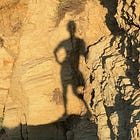
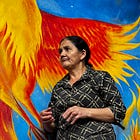
Yes, she was a true force and received the recognition she deserved.
Oh my gosh it’s beautiful! Adding this to my travel bucket list!